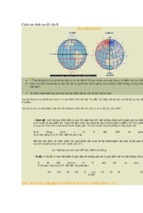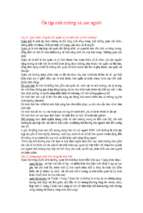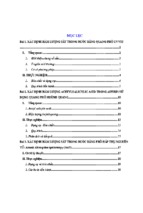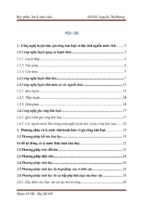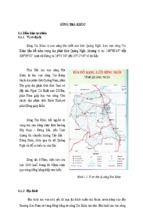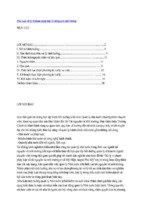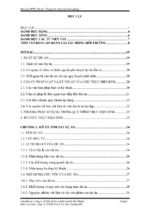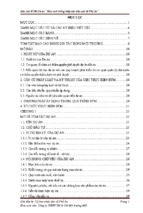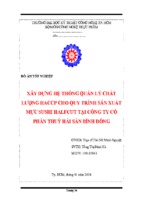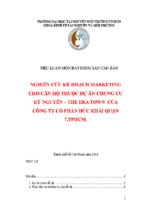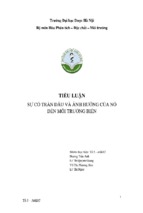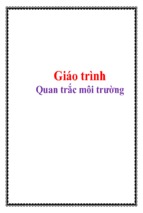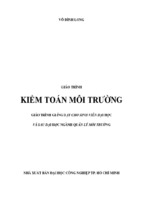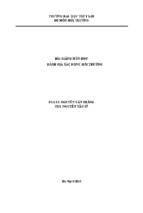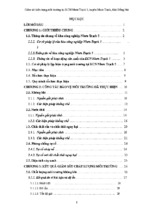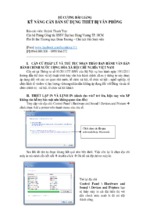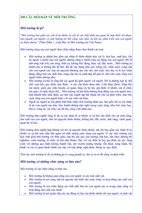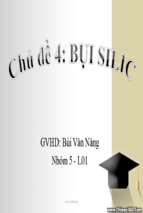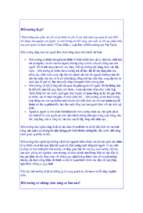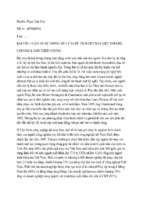qwertyuiopasdfghjklzxcvbnmqwertyui
opasdfghjklzxcvbnmqwertyuiopasdfgh
jklzxcvbnmqwertyuiopasdfghjklzxcvb
nmqwertyuiopasdfghjklzxcvbnmqwer
TỪ ĐIỂN THUẬT NGỮ
tyuiopasdfghjklzxcvbnmqwertyuiopas
MÔI TRƯỜNG
Nguồn: EPA
dfghjklzxcvbnmqwertyuiopasdfghjklzx
cvbnmqwertyuiopasdfghjklzxcvbnmq
wertyuiopasdfghjklzxcvbnmqwertyuio
pasdfghjklzxcvbnmqwertyuiopasdfghj
klzxcvbnmqwertyuiopasdfghjklzxcvbn
mqwertyuiopasdfghjklzxcvbnmqwerty
uiopasdfghjklzxcvbnmqwertyuiopasdf
ghjklzxcvbnmqwertyuiopasdfghjklzxc
vbnmqwertyuiopasdfghjklzxcvbnmrty
uiopasdfghjklzxcvbnmqwertyuiopasdf
ghjklzxcvbnmqwertyuiopasdfghjklzxc
11/1/2009
Sưu tầm: Miss.Tam – Biên tập: Mr.Rua
Liên hệ:
[email protected]
2
3
Contents
Number ......................................................................................................................................................... 4
A .................................................................................................................................................................... 4
B .................................................................................................................................................................. 51
C .................................................................................................................................................................. 84
D ................................................................................................................................................................ 147
E ................................................................................................................................................................ 189
F................................................................................................................................................................. 229
G ................................................................................................................................................................ 253
H ................................................................................................................................................................ 268
I ................................................................................................................................................................. 292
J ................................................................................................................................................................. 321
K ................................................................................................................................................................ 322
L ................................................................................................................................................................. 323
M ............................................................................................................................................................... 344
N ................................................................................................................................................................ 378
O ................................................................................................................................................................ 401
P ................................................................................................................................................................ 421
Q ................................................................................................................................................................ 475
R ................................................................................................................................................................ 476
S................................................................................................................................................................. 516
T ................................................................................................................................................................ 574
U ................................................................................................................................................................ 607
V ................................................................................................................................................................ 614
W ............................................................................................................................................................... 622
X ................................................................................................................................................................ 641
Y ................................................................................................................................................................ 641
Z................................................................................................................................................................. 641
4
7Q10
7Q10: Seven-day, consecutive low flow with a ten year
return frequency; the lowest stream flow for seven
consecutive days that would be expected to occur once in
ten years.
7Q10: Dòng chảy thấp liên tục trong bảy ngày với tần số trở
lại mười năm một; lưu lượng thấp nhất trong bảy ngày liên
tục có thể tái diễn mười năm một lần.
Abatement
Abatement: Reducing the degree or intensity of, or
eliminating, pollution.
Sự loại giảm: Việc làm giảm mức độ, cường độ hoặc loại
trừ sự ô nhiễm.
Abatement Debris
Abatement Debris: Waste from remediation activities.
Mảnh vụn loại giảm: Chất thải từ các hoạt động trị liệu.
Absorbed Dose
Absorbed Dose: In exposure assessment, the amount of a
substance that penetrates an exposed organism's absorption
barriers (e.g.,, skin, lung tissue, gastrointestinal tract)
through physical or biological processes. The term is
synonymous with internal dose.
Liều hấp thụ: Trong đánh giá phơi nhiễm, là lượng chất
thâm nhập vào các rào cản hấp thụ của cơ thể (như da, mô
phổi, đường ruột) bởi các quá trình sinh lý. Thuật ngữ này
5
đồng nghĩa với liều bên trong.
Absorption
Absorption: The uptake of water, other fluids, or dissolved
chemicals by a cell or an organism (as tree roots absorb
dissolved nutrients in soil.)
Sự hấp thụ: Sự hấp thụ nước, các loại chất lỏng khác, hóa
chất hòa tan của một tế bào hay một cơ quan (như rễ cây
hấp thụ các dưỡng chất hòa tan trong đất).
Absorption Barrier
Absorption Barrier: Any of the exchange sites of the body
that permit uptake of various substances at different rates
(e.g., skin, lung tissue, and gastrointestinal-tract wall).
Rào cản hấp thụ: Bất cứ vị trí trao đổi chất nào của cơ thể
cho phép hấp thụ các chất khác nhau ở những tỉ lệ khác
nhau (như da, phổi, thành ruột).
AC Scale Sound Level
AC Scale Sound Level: A measurement of sound
approximating the sensitivity of the human ear, used to note
the intensity or annoyance level of sounds.
Mức thang âm AC: Mức độ âm thanh vừa đủ để đo độ nhạy
cảm của tai, dùng để chỉ cường độ hay mức ồn của âm
thanh.
Accident Site
Accident Site: The location of an unexpected occurrence,
6
failure or loss, either at a plant or along a transportation
route, resulting in a release of hazardous materials.
Vị trí tai biến: Chỗ xảy ra những sự cố ngoài mong đợi,
hỏng hóc hay thất thoát tại một nhà máy hoặc một đường
vận chuyển gây ra phóng thải các chất nguy hại.
Acclimatization
Acclimatization: The physiological and behavioral
adjustments of an organism to changes in its environment.
Sự thích nghi môi trường: Thích nghi mang tính sinh lí
hoặc hành vi của một sinh vật đối với những biến đổi của
môi trường.
ACH
Air Changes Per Hour (ACH): The movement of a volume
of air in a given period of time; if a house has one air change
per hour, it means that the air in the house will be replaced in
a one-hour period.
Độ thay đổi không khí mỗi giờ (ACH): Sự chuyển động
của một khối không khí trong một thời gian cho trước. Nếu
một ngôi nhà có AHC=1, điều đó có nghĩa là không khí trong
nhà sẽ được thay thế theo chu kỳ mỗi giờ một lần.
Acid Aerosol
Acid Aerosol: Acidic liquid or solid particles small enough to
become airborne. High concentrations can irritate the lungs
and have been associated with respiratory diseases like
7
asthma.
Sol khí axít: Chất lỏng axít hay những vi hạt rắn lơ lửng
trong không khí. Ở nồng độ cao có thể gây sưng phổi và liên
quan đến những bệnh đường hô hấp như hen suyễn.
Acid Deposition
Acid Deposition: A complex chemical and atmospheric
phenomenon that occurs when emissions of sulfur and
nitrogen compounds and other substances are transformed
by chemical processes in the atmosphere, often far from the
original sources, and then deposited on earth in either wet or
dry form. The wet forms, popularly called "acid rain", can fall
to earth as rain, snow, or fog. The dry forms are acidic gases
or particulates.
Sự lắng tụ axít: Một hiện tượng khí-hoá phức tạp xảy ra khi
các hợp chất lưu huỳnh, nitơ và các chất khác bị biến đổi bởi
các quá trình hóa học trong khí quyển, thường cách xa
nguồn thải, rồi đọng lại trên đất ở trạng thái ướt hoặc khô.
Dạng ướt thường được gọi là “mưa axit”, rơi xuống đất dưới
dạng mưa, tuyết hay sương mù. Dạng khô là các khí hay vi
hạt có tính axit.
Acid Mine Drainage
Acid Mine Drainage: Drainage of water from areas that
have been mined for coal or other mineral ores. The water
has a low pH because of its contact with sulfur-bearing
material and is harmful to aquatic organisms.
Nước thải axít từ khu mỏ: Nước thoát ra từ những khu
8
khai thác than hay quặng khoáng, có độ pH thấp do tiếp xúc
với khoáng chất chứa lưu huỳnh và có hại cho các sinh vật
thủy sinh.
Acid Neutralizing
Capacity
Acid Neutralizing Capacity: Measure of ability of a base
(e.g., water or soil) to resist changes in pH.
Khả năng trung hòa axít: Số đo khả năng chống lại sự thay
đổi độ pH của một bazơ (như nước hay đất).
Acid Rain
Acid Rain: (See: acid deposition)
Mưa axit: (Xem: Sự lắng tụ axit)
Acidic
Acidic: The condition of water or soil that contains a
sufficient amount of acid substances to lower the pH below
7.0.
Có tính axit: Trạng thái nước hay đất chứa một lượng vừa
đủ các chất axit có thể làm giảm độ pH xuống dưới 7,0.
Action Levels
Action Levels:
1. Regulatory levels recommended by EPA for enforcement
by FDA and USDA when pesticide residues occur in food or
feed commodities for reasons other than the direct
application of the pesticide. As opposed to "tolerances"
which are established for residues occurring as a direct
9
result of proper usage, action levels are set for inadvertent
residues resulting from previous legal use or accidental
contamination.
2. In the Superfund program, the existence of a contaminant
concentration in the environment high enough to warrant
action or trigger a response under SARA and the National Oil
and Hazardous Substances Contingency Plan. The term is
also used in other regulatory programs. (See: tolerances.)
Các mức hoạt động:
1. Mức độ điều chỉnh do EPA đưa ra tuân theo Đạo luật FDA
và USDA khi thực phẩm có dư lượng thuốc trừ sâu không
phải do phun trực tiếp thuốc trừ sâu lên. Trái với “dung sai”
được sử dụng trong trường hợp có dư lượng khi sử dụng
đúng cách, mức hành động được lập ra cho dư lượng vô ý
gây ra do việc sử dụng theo luật trước đó hoặc sự nhiễm
bẩn ngẫu nhiên.
2. Trong chương trình Super-fund, là sự tồn tại của nồng độ
chất gây ô nhiễm trong môi trường đủ cao cho phép thực
hiện hành động hay bắt đầu phản ứng dựa trên Đạo luật
SARA và Kế hoạch dự phòng quốc gia về dầu và các chất
nguy hại. Thuật ngữ này cũng được dùng trong các chương
trình điều tiết khác. (Xem: dung sai).
Activated Carbon
Activated Carbon: A highly adsorbent form of carbon used
to remove odors and toxic substances from liquid or gaseous
emissions. In waste treatment, it is used to remove dissolved
10
organic matter from waste drinking water. It is also used in
motor vehicle evaporative control systems.
Cacbon hoạt hoá: Dạng cacbon có khả năng hấp thụ cao
được dùng để khử mùi và các chất độc hại có trong chất thải
dạng lỏng hay khí. Trong xử lý chất thải, nó được dùng để
tách các chất hữu cơ hoà tan khỏi nước thải. Dạng cacbon
này cũng được sử dụng trong hệ thống tản nhiệt của xe có
động cơ.
Activated Sludge
Activated Sludge: Product that results when primary
effluent is mixed with bacteria-laden sludge and then
agitated and aerated to promote biological treatment,
speeding the breakdown of organic matter in raw sewage
undergoing secondary waste treatment.
Bùn hoạt hóa: Bùn tạo ra khi dòng thải chính hòa lẫn với
bùn đặc có chứa vi khuẩn, sau đó được khuấy mạnh và
thông hơi để tăng khả năng xử lý sinh học, làm cho việc
phân hủy chất hữu cơ trong nước thải xảy ra nhanh hơn tại
công đoạn xử lý nước thải thứ cấp.
Activator
Activator: A chemical added to a pesticide to increase its
activity.
Hoạt chất: Hóa chất tăng hoạt tính cho thuốc trừ sâu.
Active Ingredient
Active Ingredient: In any pesticide product, the component
11
that kills, or otherwise controls, target pests. Pesticides are
regulated primarily on the basis of active ingredients.
Hoạt tố: Thành phần trong thuốc trừ sâu có thể tiêu diệt,
kiểm soát hoặc nhằm vào sâu bọ. Thuốc trừ sâu được điều
tiết dựa trên các hoạt tố.
Activity Plans
Activity Plans: Written procedures in a school's asbestosmanagement plan that detail the steps a Local Education
Agency (LEA) will follow in performing the initial and
additional cleaning, operation and maintenance-program
tasks; periodic surveillance; and reinspection required by the
Asbestos Hazard Emergency Response Act (AHERA).
Sơ đồ hoạt tính: Sơ đồ quản lí amiăng trong trường học chi
tiết hóa các bước mà Cơ quan giáo dục địa phương (LEA)
sẽ áp dụng cho việc làm sạch ban đầu và bổ sung, thực hiện
chương trình hoạt động và bảo dưỡng, giám sát định kỳ, và
tái kiểm tra theo Đạo luật đối phó khẩn cấp nguy hại do
amiăng (AHERA).
Acute Exposure
Acute Exposure: A single exposure to a toxic substance
which may result in severe biological harm or death. Acute
exposures are usually characterized as lasting no longer
than a day, as compared to longer, continuing exposure over
a period of time.
Phơi nhiễm cấp tính: Một tiếp xúc đơn nhất với chất độc có
thể gây ra tác hại sinh học hoặc tử vong. Các trường hợp
12
phơi nhiễm cấp tính thường kéo dài không quá một ngày
nếu so với phơi nhiễm tiếp diễn dài hơn trong một khoảng
thời gian.
Acute Toxicity
Acute Toxicity: The ability of a substance to cause severe
biological harm or death soon after a single exposure or
dose. Also, any poisonous effect resulting from a single
short-term exposure to a toxic substance. (See: chronic
toxicity, toxicity.)
Độc cấp tính: Khả năng một chất gây ra những tác hại sinh
học nghiêm trọng hoặc tử vong không bao lâu sau khi nhiễm
hoặc dùng một liều đơn nhất. Cũng là hiệu ứng ngộ độc do
tiếp xúc với độc chất trong thời gian ngắn. (Xem: độc mãn
tính, độ độc)
Adaptation
Adaptation: Changes in an organism's physiological
structure or function or habits that allow it to survive in new
surroundings.
Sự thích nghi: Những thay đổi về cấu trúc hoặc chức năng
sinh lý hay các thói quen của một cơ thể cho phép cơ thể
này có thể sống trong môi trường mới.
Add-on Control Device
Add-on Control Device: An air pollution control device such
as carbon absorber or incinerator that reduces the pollution
in an exhaust gas. The control device usually does not affect
the process being controlled and thus is "add-on"
13
technology, as opposed to a scheme to control pollution
through altering the basic process itself.
Thiết bị kiểm soát bổ trợ: Một công cụ kiểm soát ô nhiễm
không khí như máy hấp thụ cacbon hay máy đốt rác, có
công dụng làm giảm ô nhiễm khí thải. Thiết bị kiểm soát này
thường không ảnh hưởng đến quy trình đang được kiểm
soát và vì vậy chỉ là công nghệ “đắp thêm”, trái với kế hoạch
là nhằm kiểm soát ô nhiễm thông qua việc thay đổi cả quy
trình cơ bản.
Adequately Wet
Adequately Wet: Asbestos containing material that is
sufficiently mixed or penetrated with liquid to prevent the
release of particulates.
Ẩm vừa: Amiăng được trộn hoặc thấm với một lượng chất
lỏng vừa đủ để ngăn sự thất thoát các vi hạt.
Administered Dose
Administered Dose: In exposure assessment, the amount
of a substance given to a test subject (human or animal) to
determine dose-response relationships. Since exposure to
chemicals is usually inadvertent, this quantity is often called
potential dose.
Liều quy định: Trong đánh giá phơi nhiễm, là lượng chất
dùng cho đối tượng thử nghiệm (người hoặc động vật) để
xác định mối liên hệ giữa liều lượng và phản ứng. Việc tiếp
xúc với các hóa chất thường là do sơ xuất nên liều này còn
14
được gọi là liều tiềm tàng.
Administrative Order
Administrative Order: A legal document signed by EPA
directing an individual, business, or other entity to take
corrective action or refrain from an activity. It describes the
violations and actions to be taken, and can be enforced in
court. Such orders may be issued, for example, as a result of
an administrative complaint whereby the respondent is
ordered to pay a penalty for violations of a statute.
Lệnh quản lí: Văn bản pháp lý do EPA ban hành hướng dẫn
cá nhân, doanh nghiệp, hoặc đối tượng khác thực hiện hành
động hiệu chỉnh hoặc kiềm chế hoạt động của mình. Luật mô
tả các vi phạm và những hành động được tiến hành và có
thể buộc phải tuân thủ tại toà. Những lệnh như thế có thể
được ban hành khi có đơn kêu hành chính và bị cáo bị buộc
phải nộp phạt do vi phạm luật.
Administrative Order On
Consent
Administrative Order On Consent: A legal agreement
signed by EPA and an individual, business, or other entity
through which the violator agrees to pay for correction of
violations, take the required corrective or cleanup actions, or
refrain from an activity. It describes the actions to be taken,
may be subject to a comment period, applies to civil actions,
and can be enforced in court.
Lệnh quản lí thông qua thỏa thuận: Một thỏa thuận pháp
lý do EPA và một cá nhân, doanh nghiệp hoặc đối tượng
15
khác ký. Thông qua thỏa thuận này người vi phạm đồng ý
nộp phạt, làm sạch lại môi trường, giảm bớt phát thải. Đạo
luật này còn cho biết các hành động mang tính dân sự, có
thể là chủ đề cần lấy ý kiến công chúng, có thể buộc phải
tuân thủ tại tòa.
Administrative
Procedures Act
Administrative Procedures Act: A law that spells out
procedures and requirements related to the promulgation of
regulations.
Đạo luật quản lí hành chính: Đạo luật nêu rõ các thủ tục và
yêu cầu có liên quan đến việc công bố các luật lệ.
Administrative Record
Administrative Record: All documents which EPA
considered or relied on in selecting the response action at a
Superfund site, culminating in the record of decision for
remedial action or, an action memorandum for removal
actions.
Hồ sơ quản lí: Tất cả các tài liệu do EPA xem xét trong việc
sàng lọc các hành động phản ứng, mà trong đó đáng chú ý
nhất là hồ sơ về quyết định trị liệu hay bản ghi nhớ việc trả
lại nguyên trạng môi trường.
Adsorption
Adsorption: Removal of a pollutant from air or water by
collecting the pollutant on the surface of a solid material;
e.g., an advanced method of treating waste in which
16
activated carbon removes organic matter from waste-water.
Sự hấp thu: Sự loại bỏ một chất gây ô nhiễm khỏi không khí
hay nước bằng cách thu chất ô nhiễm trên bề mặt của một
vật liệu rắn, ví dụ như phương pháp xử lý nước thải cao cấp
trong đó cacbon hoạt hoá loại bỏ chất hữu cơ khỏi nước
thải.
Adulterants
Adulterants: Chemical impurities or substances that by law
do not belong in a food, or pesticide.
Tạp chất: Các chất hoặc tạp chất hóa học, theo luật, không
có trong thực phẩm hoặc thuốc trừ sâu.
Adulterated
Adulterated:
1. Any pesticide whose strength or purity falls below the
quality stated on its label.
2. A food, feed, or product that contains illegal pesticide
residues.
Có tạp chất:
1. Thuốc trừ sâu có độ mạnh và độ tinh khiết thấp hơn so
với ghi trên nhãn
2. Thực phẩm cho người, động vật hoặc sản phẩm có chứa
dư lượng thuốc trừ sâu không cho phép.
Advanced Treatment
Advanced Treatment: A level of wastewater treatment more
stringent than secondary treatment; requires an 85-percent
17
reduction in conventional pollutant concentration or a
significant reduction in non- conventional pollutants.
Sometimes called tertiary treatment.
Phương pháp xử lý cao cấp: Mức độ xử lý nước thải chặt
chẽ hơn xử lý thứ cấp, đòi hỏi phải giảm được 85% nồng độ
các chất ô nhiễm thông thường hay giảm thiểu đáng kể
những chất ô nhiễm đặc biệt. Phương pháp này đôi khi
được gọi là giai đoạn xử lý tam cấp.
Advanced Wastewater
Treatment
Advanced Wastewater Treatment: Any treatment of
sewage that goes beyond the secondary or biological water
treatment stage and includes the removal of nutrients such
as phosphorus and nitrogen and a high percentage of
suspended solids. (See: Primary, Secondary Treatment.)
Phương pháp xử lý nước thải cao cấp: Mọi quy trình xử lý
nước thải diễn ra sau giai đoạn xử lý thứ cấp hay xử lý sinh
học chất thải bao gồm việc loại bỏ các dưỡng chất như phốt
pho, nitơ và một tỉ lệ lớn các chất rắn lơ lửng. (Xem: xử lý sơ
cấp, thứ cấp.)
Adverse Effects Data
Adverse Effects Data: FIFRA requires a pesticide registrant
to submit data to EPA on any studies or other information
regarding unreasonable adverse effects of a pesticide at any
time after its registration.
Dữ liệu tác hại: FIFRA yêu cầu người đăng ký thuốc trừ sâu
cung cấp dữ liệu cho EPA về bất kỳ nghiên cứu hoặc thông
18
tin có liên quan đến các tác hại của thuốc bất kỳ lúc nào sau
khi đăng ký.
Advisory
Advisory: A non-regulatory document that communicates
risk information to those who may have to make risk
management decisions.
Thông tin chỉ dẫn: Một tài liệu không điều chỉnh cho biết
các thông tin rủi ro cho những ai thực hiện công tác quản lí
rủi ro.
Aerated Lagoon
Aerated Lagoon: A holding and/or treatment pond that
speeds up the natural process of biological decomposition of
organic waste by stimulating the growth and activity of
bacteria that degrade organic waste.
Phá sục khí: Một hồ chứa hay xử lý dùng để đẩy nhanh quá
trình phân huỷ sinh học tự nhiên các chất thải hữu cơ bằng
cách kích thích độ tăng trưởng và hoạt tính của vi khuẩn
phân huỷ chất thải hữu cơ.
Aeration
Aeration: A process which promotes biological degradation
of organic matter in water. The process may be passive (as
when waste is exposed to air), or active (as when a mixing or
bubbling device introduces the air).
Sự sục khí: Quá trình thúc đẩy sự phân hủy sinh học của
những chất hữu cơ trong nước. Quá trình này có thể mang
19
tính bị động (như khi chất thải tiếp xúc với không khí) hoặc
mang tính chủ động (khi một thiết bị trộn hoặc thổi bọt đưa
không khí vào nước.)
Aeration Tank
Aeration Tank: A chamber used to inject air into water.
Bể sục khí: Khoang dùng để bơm không khí vào trong
nước.
Aerobic
Aerobic: Life or processes that require, or are not destroyed
by, the presence of oxygen. (See: Anaerobic.)
Tính hiếu khí: Sự sống hoặc quá trình cần, hay không bị
ảnh hưởng bởi sự có mặt của oxy. ( Xem: kỵ khí.)
Aerobic Treatment
Aerobic Treatment: Process by which microbes decompose
complex organic compounds in the presence of oxygen and
use the liberated energy for reproduction and growth. (Such
processes include extended aeration, trickling filtration, and
rotating biological contactors.)
Xử lý hiếu khí: Quá trình vi khuẩn phân giải những hợp chất
hữu cơ phức tạp với sự có mặt của oxy và nhờ năng lượng
giải phóng để tái sinh và phát triển. (Những quá trình như
vậy gồm việc sục khí kéo dài, lọc nhỏ giọt, và dùng bộ tiếp
xúc sinh học rotor quay)
20
Aerosol
Aerosol:
1. Small droplets or particles suspended in the atmosphere,
typically containing sulfur. They are usually emitted naturally
(e.g., in volcanic eruptions) and as the result of
anthropogenic (human) activities such as burning fossil fuels.
2. The pressurized gas used to propel substances out of a
container.
3. A finely divided material suspended in air or other gaseous
environment.
Sol khí:
1. Những giọt li ti hay những hạt lơ lửng trong khí quyển,
thường có chứa lưu huỳnh, được phát ra tự nhiên (vd: khi
núi lửa phun) và là kết quả những hoạt động của con người
như việc đốt nhiên liệu hoá thạch.
2. Khí nén dùng để đẩy các hợp chất ra khỏi bình chứa.
3. Một chất bị chia nhỏ lơ lửng trong không khí hay môi
trường khí khác.
Affected Landfill
Affected Landfill: Under the Clean Air Act, landfills that
meet criteria for capacity, age, and emissions rates set by
the EPA. They are required to collect and combust their gas
emissions.
Bãi rác bị ô nhiễm: Theo Đạo luật không khí sạch, là các
bãi rác đã quá tải, quá thời hạn sử dụng và tỉ lệ khí thải vượt
quá mức qui định của EPA. Khí thải ra phải được gom đốt.

